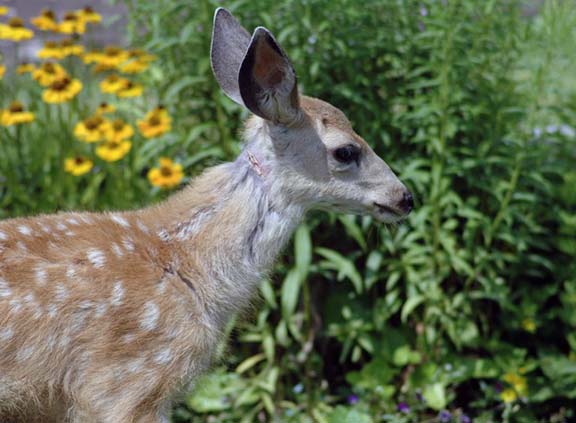Aboriginal council offers to help with deer problem in Grand Forks
The Boundary All Nations Aboriginal Council (BANAC) has offered up help with a culturally viable solution to the deer issue in Grand Forks.
Joan Holmes, BANAC president, sent the committee a written letter of intent asking that an aboriginal for-profit company be created and paid to help the committee in whichever solution they choose. If the committee chooses to have a cull, the group would like to be the ones to do the cull and then use the meat, skins, bones, hooves and antlers for cultural purposes. If the relocation of the herd or targeted fencing is chosen, they would also like to be a part of that.
The deer population living within Grand Forks city limits is about 154, as of the last official deer count on Sept. 18 of this year. That number is slightly down from last year’s 179, making for a stable population. The deer are the cause of many vehicle collisions, destroy gardens and have even been known to be aggressive to people, all issues the deer committee is trying to address. Culling the herd to lower the numbers, relocating them to the wilderness and improving city-wide fencing are just some of the options the committee is considering.
“It’s a natural resource,” said Holmes of the deer during an interview with The Boundary Sentinel. “The deer are a problem, but people don’t want to see them destroyed. Relocation is not an option because the deer aren’t used (to living rurally). We look (at the deer) as a natural resource and if deer are utilized in a different way – for hides and meat – it might be better. Or, if they choose to do fencing, it could employ some young people who need training and work …This could just be an opportunity to use things in a good way.”
“BANAC is on board just in case they are doing some major culling – which I don’t see happening,” said Danny Williamson, vice president of BANAC and president of the local Metis Association.
“We’re just putting our two cents worth in to try and calm down whatever decision comes down the road. Some will be upset, but maybe we can mitigate that by treating the deer with respect, creating part-time jobs for aboriginal people and to benefit the community.”
Williamson said every bit of the deer would be used, should BANAC be involved in a cull. The hide for drums, the hooves for clackers on traditional dance outfits, the meat could be sold or given to the community like the elders and the antlers can be made into buttons. He said even if everything is left as it is now, it might be good to have someone assigned to picking up the deer carcasses off the road when they’ve been hit so the animal would not be wasted.
As for relocation of the herd, neither Williamson nor Holmes thinks that would work.
“If they moved those deer (out of town) they would not survive, or if they did survive they would be killed by hunters,” said Williamson, adding moving them may be less humane because the animals may starve in unfamiliar territory.
Mayor Brian Taylor said the deer committee will seriously consider the BANAC offer to assist.
“I did talk to the Indian band in Osoyoos and the concept is that the natives may have more freedom to deal with the disposal of the meat and possibly it will be more socially acceptable for them,” said Taylor after the deer committee meeting, Tuesday, Oct. 16.
“Plus, bureaucratically it is more acceptable to the provincial government for a native group to be straight up selling it, dehydrating it and making the best use of whatever meat comes their way … They can make full use of the animal.”
More research will be done about the aboriginal option by the committee before a decision is made. The committee is also considering creating another survey to have the public input on what to do with the deer.
The next deer committee meeting is on Tuesday, Nov. 20 at 9:30 a.m. in the Regional District Kootenay Boundary board room.






















